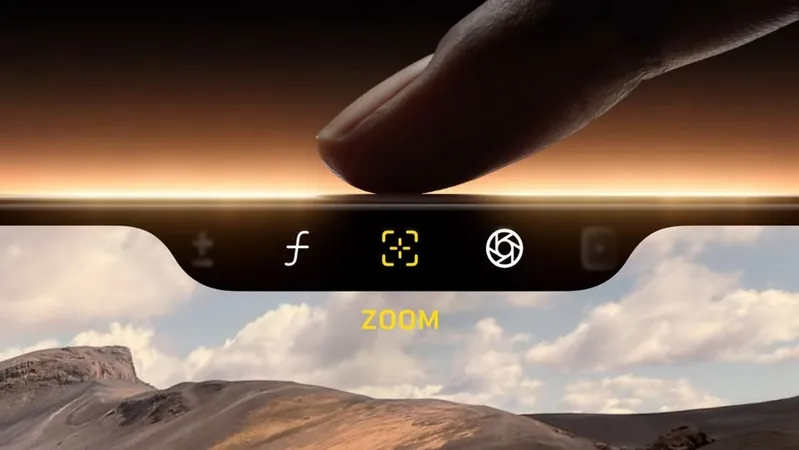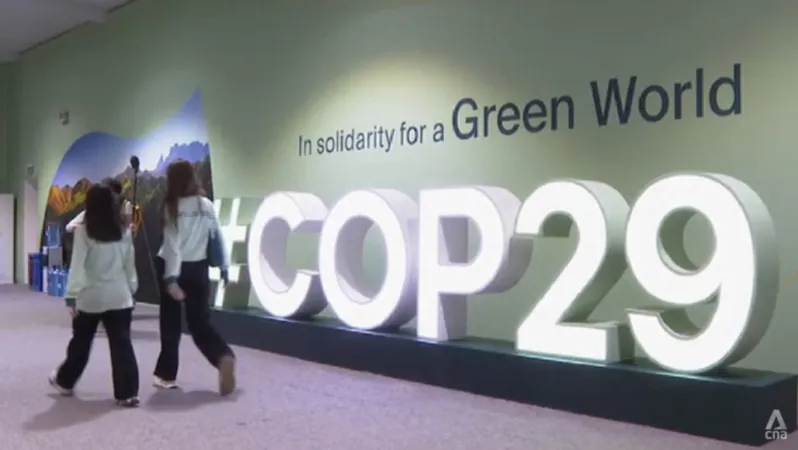
Unveiling the Secrets of Mars: How an Old Camera is Revolutionizing Planetary Science
2024-11-20
Author: John Tan
Unveiling the Secrets of Mars: How an Old Camera is Revolutionizing Planetary Science
In a remarkable twist of fate, an old camera aboard the European Space Agency's (ESA) Mars Express mission has transformed into a powerful tool for scientific research. The Visual Monitoring Camera (VMC), initially designed for a singular event, is now playing a crucial role in observing the Martian atmosphere and enhancing our understanding of weather phenomena on the Red Planet.
A Camera with a Second Chance
Launched on Christmas Day in 2003, Mars Express marked ESA's first mission to Mars. The VMC was originally intended to monitor the release of the Beagle 2 lander. However, after capturing a few snapshots of this pivotal moment and being switched off, it remained dormant for years until its revival in 2007. Researchers quickly recognized the VMC's unique potential for public outreach and ongoing scientific contributions, prompting its regular operation.
Harnessing a Unique Orbit
Unlike traditional satellites, the Mars Express operates in a nearly polar orbit, allowing it a vantage point that is exceptional for observing Mars as a whole. Its 11,560-kilometer apoapsis combined with a rapid 7.5-hour orbit enables the VMC to capture full-disk images of Martian weather. This capability has positioned it as a valuable asset, offering insights into atmospheric patterns and phenomena that earlier missions overlooked.
Meteorological Marvels
The VMC's contributions to Martian meteorology have been impressive. It has significantly advanced the global monitoring of the Martian atmosphere, particularly regarding atmospheric aerosols, ice clouds, and dust storms. In 2018, the camera captured the stunning Arsia Mons elongated cloud, a phenomenon stretching 1,500 kilometers that had evaded detection by previous missions. This critical observation underscores the camera's role in expanding our knowledge of dynamic weather systems on Mars.
A Blend of Simplicity and Functionality
Despite its humble specifications—similar to a low-resolution early 2000s cell phone—the VMC offers a wide field of view that captures essential atmospheric data. Researchers employ techniques akin to those found in amateur astrophotography, allowing for high dynamic range (HDR) imaging to highlight features that may otherwise remain hidden. This blend of simplicity and effectiveness reveals how even basic technology can yield invaluable scientific insights.
Collaborative Efforts and Future Prospects
The revival and adaptation of the VMC showcase the power of collaboration among various research institutions. ESA, the IAA-CSIC Institute of Astrophysics in Andalusia, and the University of the Basque Country have united their strengths to enhance our understanding of Mars. As VMC continues to provide critical data, there is a push for future missions to integrate newer, high-resolution cameras to further advance Mars research.
Additionally, the VMC is not alone in the quest to monitor Martian weather. The United Arab Emirates’ Mars Hope satellite also captures full-disk imagery which can offer complementary data during dust storm seasons—a critical period for Martian atmospheric studies.
A New Era of Small Satellites
The resurgence of older cameras like the VMC hints at a broader trend in planetary science: the incorporation of off-the-shelf camera technology into small satellite missions. This trend has already been exemplified by various missions, including the Mars Cube One (MarCO) cubesats and the Italian Space Agency's LICIACube.
A Game-Changer in Atmospheric Research
The VMC’s evolution from an incidental camera to a major player in Martian meteorology reinforces the notion that innovative science can arise from unexpected sources. By continuing to leverage existing technologies and collaborate across borders, we can unfold new chapters in the exploration of Mars. The astonishing images it provides are not just visually captivating; they hold the key to understanding the atmospheric mysteries of our neighboring planet. As we look to the future, it is clear that old hardware can find new life—truly a testament to the spirit of scientific inquiry.



 Brasil (PT)
Brasil (PT)
 Canada (EN)
Canada (EN)
 Chile (ES)
Chile (ES)
 España (ES)
España (ES)
 France (FR)
France (FR)
 Hong Kong (EN)
Hong Kong (EN)
 Italia (IT)
Italia (IT)
 日本 (JA)
日本 (JA)
 Magyarország (HU)
Magyarország (HU)
 Norge (NO)
Norge (NO)
 Polska (PL)
Polska (PL)
 Schweiz (DE)
Schweiz (DE)
 Singapore (EN)
Singapore (EN)
 Sverige (SV)
Sverige (SV)
 Suomi (FI)
Suomi (FI)
 Türkiye (TR)
Türkiye (TR)